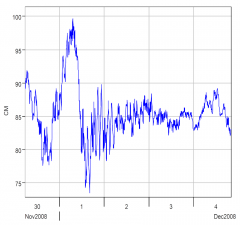2021. április 20.
Rövid leírás:
Human hearing is excellent at processing wave information, it can distinguish between several wave componens (several instruments), keeping track of how the volume rises and falls. This could come handy in understanding how wind induced water level fluctuations are related to wind, and how they change as we move from one point to another along the shoreline. The simplest idea is is to simply scale fluctuations of the water level and wind to an audible volume, experimenting with pitch and volume. Further experiments can be more sophisticated, such as mapping several variables to several synthetised music instruments (MIDI), such as mapping the wind to a violin and two simultaneous water levels to a cello and a double basse. One advantage of human hearing is that it can filter out noise from structured signals, and in several scientific areas, "audification" has complemented tradional methods of analysis (Fourier spectra or wavelets) successfully.

This topic will require MATLAB, an openness to discovering what software tools are available on the web, and probably a musical ear!
Find out more:
Konzulens(ek):
Javasolt szint:
BSc téma
